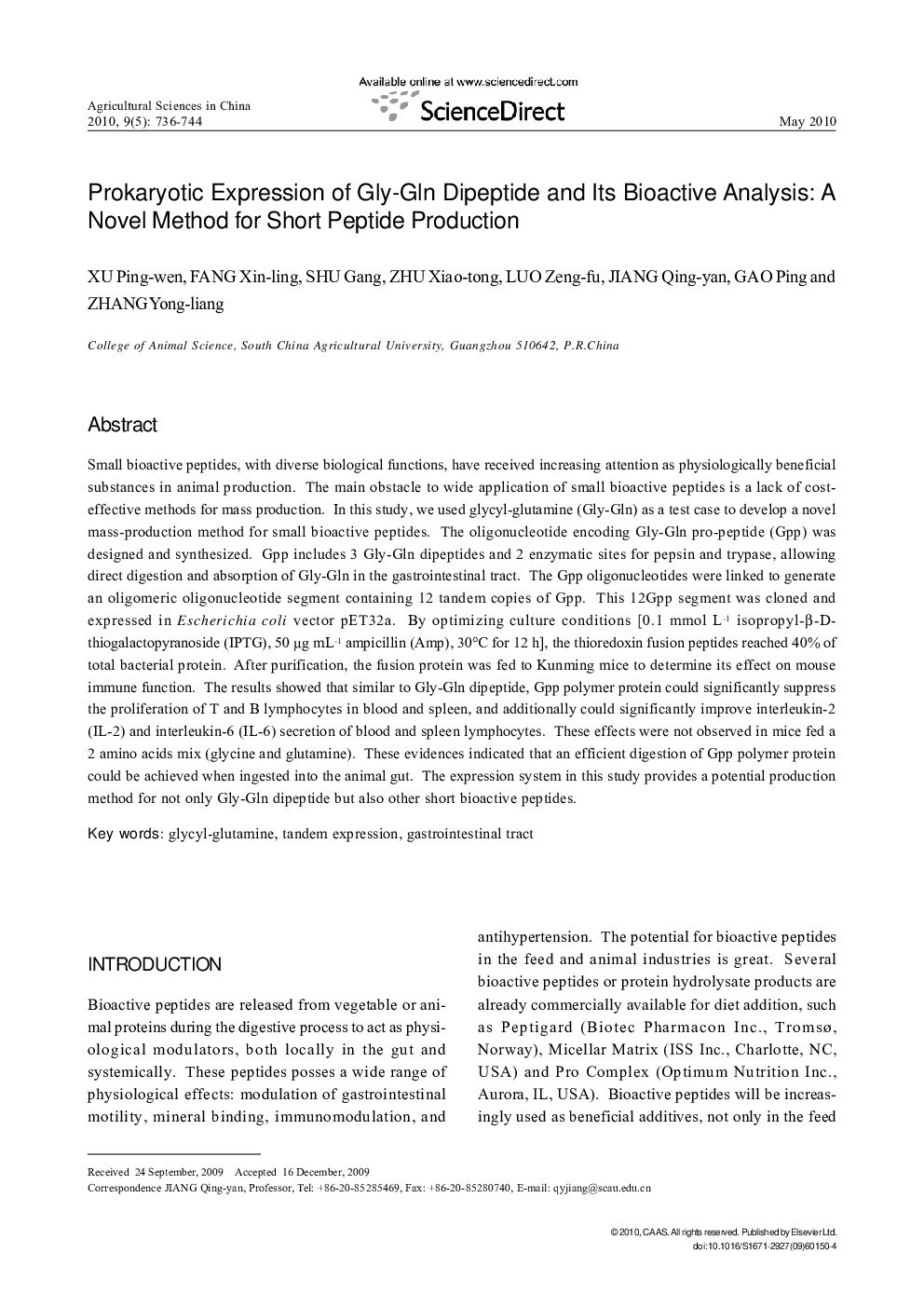| Article ID | Journal | Published Year | Pages | File Type |
|---|---|---|---|---|
| 4490243 | Agricultural Sciences in China | 2010 | 9 Pages |
Small bioactive peptides, with diverse biological functions, have received increasing attention as physiologically beneficial substances in animal production. The main obstacle to wide application of small bioactive peptides is a lack of cost-effective methods for mass production. In this study, we used glycyl-glutamine (Gly-Gln) as a test case to develop a novel mass-production method for small bioactive peptides. The oligonucleotide encoding Gly-Gln pro-peptide (Gpp) was designed and synthesized. Gpp includes 3 Gly-Gln dipeptides and 2 enzymatic sites for pepsin and trypase, allowing direct digestion and absorption of Gly-Gln in the gastrointestinal tract. The Gpp oligonucleotides were linked to generate an oligomeric oligonucleotide segment containing 12 tandem copies of Gpp. This 12Gpp segment was cloned and expressed in Escherichia coli vector pET32a. By optimizing culture conditions [0.1 mmol L−1 isopropyl-β-D-thiogalactopyranoside (IPTG), 50 μg mL−1 ampicillin (Amp), 30°C for 12 h], the thioredoxin fusion peptides reached 40% of total bacterial protein. After purification, the fusion protein was fed to Kunming mice to determine its effect on mouse immune function. The results showed that similar to Gly-Gln dipeptide, Gpp polymer protein could significantly suppress the proliferation of T and B lymphocytes in blood and spleen, and additionally could significantly improve interleukin-2 (IL-2) and interleukin-6 (IL-6) secretion of blood and spleen lymphocytes. These effects were not observed in mice fed a 2 amino acids mix (glycine and glutamine). These evidences indicated that an efficient digestion of Gpp polymer protein could be achieved when ingested into the animal gut. The expression system in this study provides a potential production method for not only Gly-Gln dipeptide but also other short bioactive peptides.
